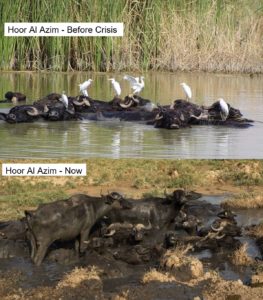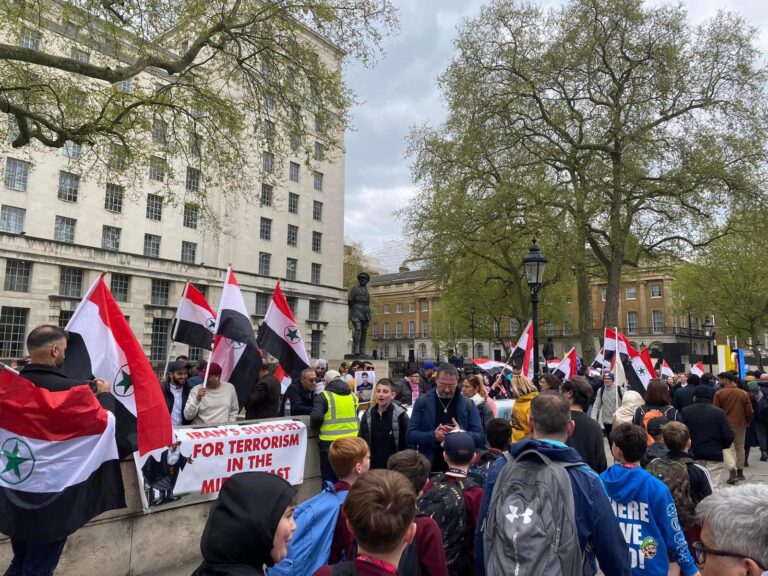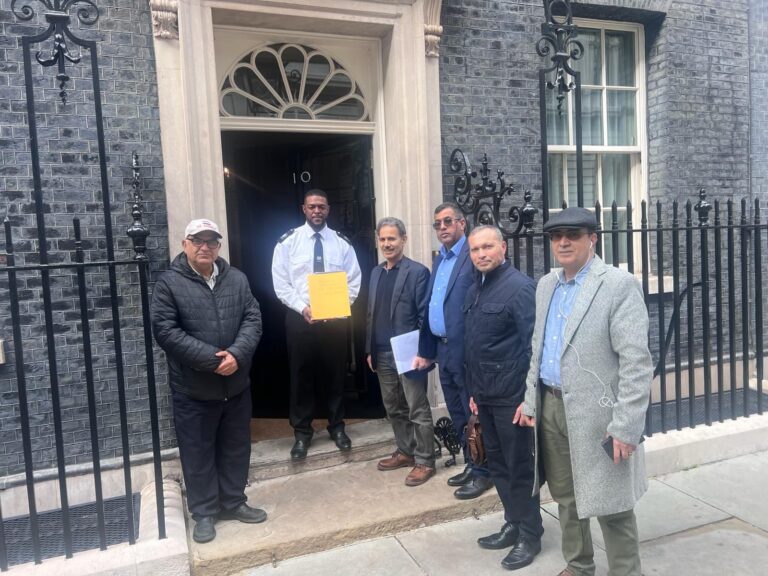
Extending to a depth of 5 meters and covering a vast 120,000-hectare expanse, the Hawizeh Marshes, also known as Hoor Al Azim, thrive on the life-giving waters of the Karkheh River in Iran and the Tigris River in Iraq. Adorned entirely by reeds, this unique and vital habitat tells a tale not only of nature but also of extraordinary creatures. The iconic Kanarazi buffalo, resilient in both domestic and wild landscapes, and 12 species of fish compose the vibrant symphony of life in this haven.
For generations, the Hoor Al Azim wetland has been a crucial lifeline for those dwelling in its embrace, primarily the Arab population of both Iran and Iraq. They have carved out their existence here and provided for their families’ economy. Across numerous villages and towns, they have depended on this wetland, its waters, and its blessings to sustain their families and way of life.
Today, however, more than 90% of the wetland has dwindled away, placing the invaluable riches of Hoor Al Azim on the verge of obliteration. Extensive portions of this magnificent habitat in southwestern Iran have transformed into dust, giving rise to colossal dust storms. The encroachment of the oil industry has fractured the once-expansive wetland, resulting in environmental destruction and triggering catastrophic fires and environmental crises. The Karkheh Dam, by reducing the water inflow to the wetland, has resulted in a decrease in its size, leading to various environmental problems for the organisms’ habitat. The captivating Hoor Al Azim Wetland, once brimming with diverse life, now finds itself at the mercy of an Iranian regime and its sinister plan.
These marshes have become a battleground, where nature clashes with relentless agenda led by the Iranian regime, fueled by sinister political and economic ambitions. The destruction of these marshes is emblematic of the larger struggle faced by the Ahwazi Arab population. It symbolizes a calculated plan to dispossess people from their ancestral lands, forcing them into the shadows of despair. The environmental crisis in the Hoor Al Azim wetland is a stark testament to the Iranian regime’s ruthless agenda, where environmental devastation serves as a means to an end – the displacement of the Ahwazi Arabs.
Governments and international organizations should condemn this sinister plot and stand up for the rights, dignity, and future of the Ahwazi Arab people. Failure to do so would not just perpetuate environmental decay but endorse human suffering, all part of a nefarious scheme to erase a people from their homeland.
Retaj










